This time I’ll detail a uniquely Australian cryptid: the ‘bunyip’.
The origins of this creature are somewhat murky, but it is believed that in the early 1800s, as settlers migrated away from Sydney inwards from the coast and down toward Victoria, tales began to emerge about a large water-creature called the bunyip by the Aboriginals. While the descriptions seemed fantastic Europeans had already been so surprised by other unusual Australian fauna – especially the platypus – as to take them seriously.
The bunyip was said to be quite large, and while mostly docile could threaten a man and was indeed responsible for some Aboriginal deaths. Early settlers were suitable concerned about running across such a beast, especially since the Aboriginals were very scared of them. The actual appearance of a bunyip though was unclear, despite efforts by scientists (including Banks) to pin them down. It was generally believed to be semi-aquatic, large, and somewhat mammalian but with birdlike features (especially the head). What was agreed on was that the bunyip could produce a loud and alarming moan, which could be heard at night from great distances.
In 1845 a Victorian newspaper reported the discovery of bones believed to be those of a bunyip. A couple of years later the Australian Museum in Sydney even put a bunyip skull on exhibit, but it was later discovered to be a deformed horses skull. By this time, with none having actually been seen by reputable witnesses, the creature was transitioning into folklore, and it’s status as an actual living creature was fading fast.
But sightings continued including a widely publisized (at the time) account in 1852 by an infamous escaped convict who lived with an Aboriginal tribe for decades. He claimed to have seen bunyips several times, describing them as timid but dangerous creatures that inhabited lakes and preferred to eat women. He had only seem them half-submerged, and said they were covered in feathers. Aboriginals still insisted the creature was real, although accounts of it having supernatural powers made these claims increasingly difficult to believe.
By the depression, the word ‘bunyip’ had become synonymous for ‘impostor’ in Australia, and few seriously believed the creature existed. Scientists and anthropologists had come up with several explanations for the origin of the creature, including:
– Fur seals, which were known to travel far inland in some Australian river systems
– Crocodiles, which can grow to be enormous especially in northern Australia
– An as-yet-undiscovered species of otter or giant eel
– A surviving Diprotodon, which is an extinct aquatic wombat-like creature bigger than a hippo (this was a prevalent theory apparently)
– An ancestral memory of a duck-billed or other aquatic dinosaur that had somehow survived into the early Aboriginal era
Even these explanations faded in time, and these days the bunyip is considered no more real than other Aboriginal Dreamtime fauna such as The Rainbow Serpent or the great frog Tiddalik.
Those two stamps contrast the bunyip of myth with the (presumed) origin of the creature. Bunyips today exist only mostly in the world of childrens books and movies or advertising, and look a bit like this statue of one in canberra:
While still included in the ranks of cryptids, recent sightings of bunyips – or even faked sightings – are almost nonexistent. This is a creature that seems to either have never existed at all, or be so good at hiding in the hidden parts of Australia that no one believes it ever existed at all. Which theory do you prefer?
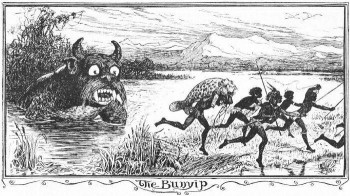
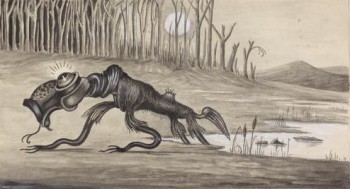
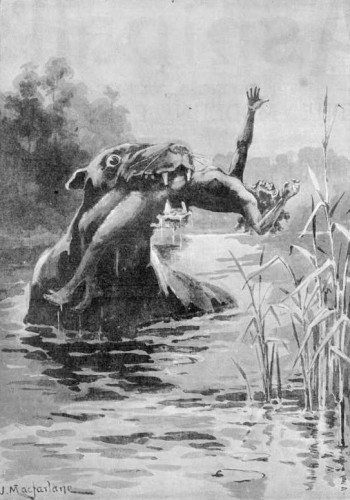
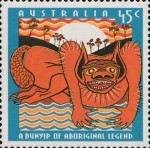
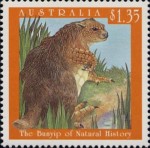

I believe almost every major monster myth is rooted in long-ago encounters with megafauna.
I also believe you forgot to mention this chap – https://www.youtube.com/watch?v=kQrM7UDtd_o
The original article was longer, including pop-culture bunyips such as Alexander, the AD&D Monster and even their appearance in Japanese RPGs.
But I self-edited 🙂